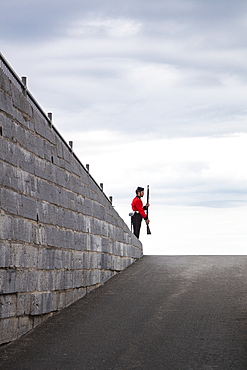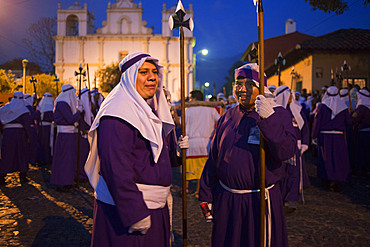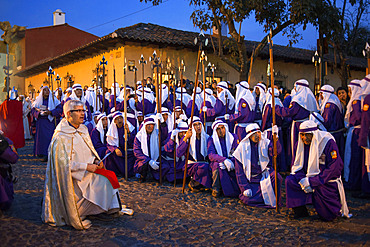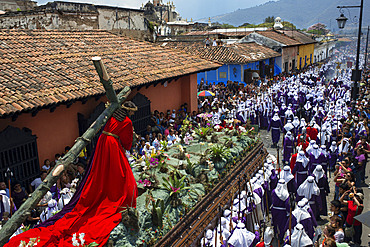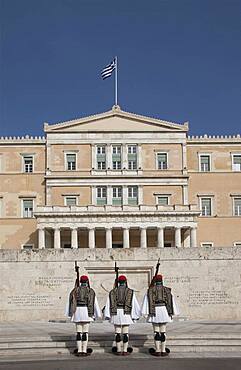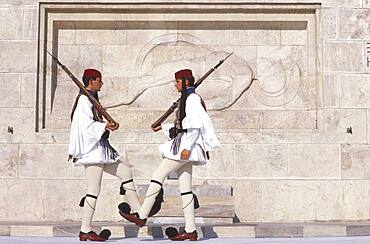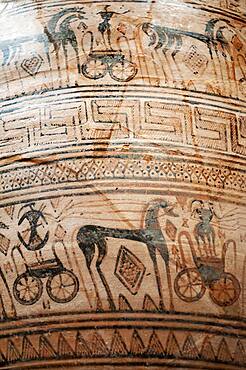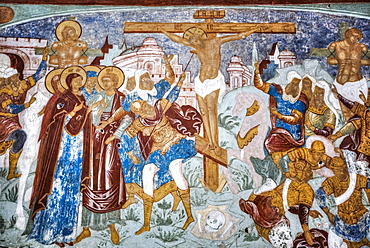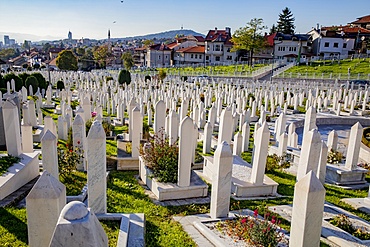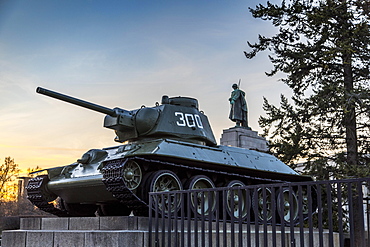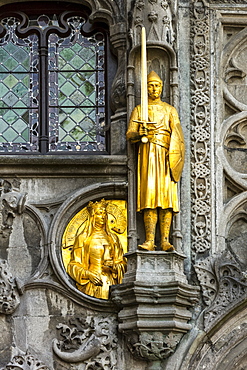Recent searches
Loading...
1116-51843 - Interior Fresco, St George Church Mirauti, 1375; Suceava, Suceava County, Romania
1113-106993 - Memorial wall to World War II in the Nizhny Novgorod Kremlin, Nizhny Novgorod, Nizhny Novgorod District, Russia, Europe
1113-106913 - Uniformed performers known as the Fort Henry Guard lead British military life demonstrations and tours for visitors to Fort Henry Historic Site and Living History Museum, Kingston, Ontario, Canada, North America
1113-107300 - Changing of the guard at the Eternal Flame in the Mamayev Kurgan memorial complex next to the giant Motherland Ruf statue, Volgograd, Volgograd Oblast, Russia, Europe
1113-106338 - Evzone soldiers performing change of guard, Athens, Greece, Europe,
1113-106339 - Evzone soldiers performing change of guard, Athens, Greece, Europe,
1113-106340 - Evzone soldiers performing change of guard, Athens, Greece, Europe,
1113-106337 - Evzone soldier performing change of guard, Athens, Greece, Europe,
832-393638 - Figure of Victoria on a war memorial, Nuremberg, Middle Franconia, Bavaria, Germany, Europe
1350-3758 - Easter Holy Week procession in Antigua, Guatemala. Jesus Nazareno de la Penitencia Procession in Antigua, Guatemala. Holy Week, friday.
1350-2688 - Verges, a small town in the Northeast of Catalonia (Spain), during Easter celebrates the Procession of Verges with skeletons dancing on the sound of a drum, Roman soldiers, known as the 'Manages', and a representation of the life and crucifixion of Jesus Christ. The Procession features the Dance of Death, a tradition from the Middle Age associated with epidemics and plagues and the only one remaining in Spain Ten skeletons dance to the beat of a drum to remember that no one is exempt of death. The backdrop of the medieval walls and towers of Verges is key to this macabre staging.
1350-2685 - A Swiss Guard during Palm Sunday mass officiated by Pope Francis in Saint Peter's Square
1350-3754 - A boy spreads incense at the Jesus Nazareno del Perdon procession during Easter Holy Week in Antigua Guatemala. Holy Week (Semana Santa) carpet of colored sawdust (alfombras) being prepared on Antigua street. Jesus Nazareno de la Penitencia Procession in Antigua, Guatemala.
1350-2693 - Verges, a small town in the Northeast of Catalonia (Spain), during Easter celebrates the Procession of Verges with skeletons dancing on the sound of a drum, Roman soldiers, known as the 'Manages', and a representation of the life and crucifixion of Jesus Christ. The Procession features the Dance of Death, a tradition from the Middle Age associated with epidemics and plagues and the only one remaining in Spain Ten skeletons dance to the beat of a drum to remember that no one is exempt of death. The backdrop of the medieval walls and towers of Verges is key to this macabre staging.
1350-2692 - Verges, a small town in the Northeast of Catalonia (Spain), during Easter celebrates the Procession of Verges with skeletons dancing on the sound of a drum, Roman soldiers, known as the 'Manages', and a representation of the life and crucifixion of Jesus Christ. The Procession features the Dance of Death, a tradition from the Middle Age associated with epidemics and plagues and the only one remaining in Spain Ten skeletons dance to the beat of a drum to remember that no one is exempt of death. The backdrop of the medieval walls and towers of Verges is key to this macabre staging.
1350-2695 - Verges, a small town in the Northeast of Catalonia (Spain), during Easter celebrates the Procession of Verges with skeletons dancing on the sound of a drum, Roman soldiers, known as the 'Manages', and a representation of the life and crucifixion of Jesus Christ. The Procession features the Dance of Death, a tradition from the Middle Age associated with epidemics and plagues and the only one remaining in Spain Ten skeletons dance to the beat of a drum to remember that no one is exempt of death. The backdrop of the medieval walls and towers of Verges is key to this macabre staging.
1350-3760 - Easter Holy Week procession in Antigua, Guatemala. Jesus Nazareno de la Penitencia Procession in Antigua, Guatemala. Holy Week, friday.
1350-2690 - Verges, a small town in the Northeast of Catalonia (Spain), during Easter celebrates the Procession of Verges with skeletons dancing on the sound of a drum, Roman soldiers, known as the 'Manages', and a representation of the life and crucifixion of Jesus Christ. The Procession features the Dance of Death, a tradition from the Middle Age associated with epidemics and plagues and the only one remaining in Spain Ten skeletons dance to the beat of a drum to remember that no one is exempt of death. The backdrop of the medieval walls and towers of Verges is key to this macabre staging.
1350-2691 - Verges, a small town in the Northeast of Catalonia (Spain), during Easter celebrates the Procession of Verges with skeletons dancing on the sound of a drum, Roman soldiers, known as the 'Manages', and a representation of the life and crucifixion of Jesus Christ. The Procession features the Dance of Death, a tradition from the Middle Age associated with epidemics and plagues and the only one remaining in Spain Ten skeletons dance to the beat of a drum to remember that no one is exempt of death. The backdrop of the medieval walls and towers of Verges is key to this macabre staging.
1350-2687 - Verges, a small town in the Northeast of Catalonia (Spain), during Easter celebrates the Procession of Verges with skeletons dancing on the sound of a drum, Roman soldiers, known as the 'Manages', and a representation of the life and crucifixion of Jesus Christ. The Procession features the Dance of Death, a tradition from the Middle Age associated with epidemics and plagues and the only one remaining in Spain Ten skeletons dance to the beat of a drum to remember that no one is exempt of death. The backdrop of the medieval walls and towers of Verges is key to this macabre staging.
1350-3763 - Easter Holy Week procession in Antigua, Guatemala. Jesus Nazareno de la Penitencia Procession in Antigua, Guatemala. Holy Week, friday.
1350-2689 - Verges, a small town in the Northeast of Catalonia (Spain), during Easter celebrates the Procession of Verges with skeletons dancing on the sound of a drum, Roman soldiers, known as the 'Manages', and a representation of the life and crucifixion of Jesus Christ. The Procession features the Dance of Death, a tradition from the Middle Age associated with epidemics and plagues and the only one remaining in Spain Ten skeletons dance to the beat of a drum to remember that no one is exempt of death. The backdrop of the medieval walls and towers of Verges is key to this macabre staging.
1350-2696 - Verges, a small town in the Northeast of Catalonia (Spain), during Easter celebrates the Procession of Verges with skeletons dancing on the sound of a drum, Roman soldiers, known as the 'Manages', and a representation of the life and crucifixion of Jesus Christ. The Procession features the Dance of Death, a tradition from the Middle Age associated with epidemics and plagues and the only one remaining in Spain Ten skeletons dance to the beat of a drum to remember that no one is exempt of death. The backdrop of the medieval walls and towers of Verges is key to this macabre staging.
1350-2697 - Verges, a small town in the Northeast of Catalonia (Spain), during Easter celebrates the Procession of Verges with skeletons dancing on the sound of a drum, Roman soldiers, known as the 'Manages', and a representation of the life and crucifixion of Jesus Christ. The Procession features the Dance of Death, a tradition from the Middle Age associated with epidemics and plagues and the only one remaining in Spain Ten skeletons dance to the beat of a drum to remember that no one is exempt of death. The backdrop of the medieval walls and towers of Verges is key to this macabre staging.
1350-2694 - Verges, a small town in the Northeast of Catalonia (Spain), during Easter celebrates the Procession of Verges with skeletons dancing on the sound of a drum, Roman soldiers, known as the 'Manages', and a representation of the life and crucifixion of Jesus Christ. The Procession features the Dance of Death, a tradition from the Middle Age associated with epidemics and plagues and the only one remaining in Spain Ten skeletons dance to the beat of a drum to remember that no one is exempt of death. The backdrop of the medieval walls and towers of Verges is key to this macabre staging.
1178-36186 - Portrait of black woman soldier with family
1178-36082 - Frustrated African American soldier sitting on front stoop
1178-36190 - Black woman soldier hugging daughter in doorway
1178-36185 - Portrait of black woman soldier hugging man
1178-36192 - Black woman soldier greeting daughter in street
1178-36194 - Black woman soldier greeting daughter in street
1178-36191 - Black woman soldier hugging man in doorway
1178-36188 - Smiling black woman soldier with daughter waving American flag
1178-36184 - Black woman soldier hugging daughter in street
1178-36197 - Portrait a smiling black woman soldier
1178-36080 - Smiling African American soldier sitting on front stoop reading letter
1178-36081 - Soldier and parents sitting on front stoop posing for cell phone selfie
1178-36087 - African American soldier running in race with son
1178-36091 - African American boy greeting returning soldier father
1178-36189 - Portrait of smiling black woman soldier
1178-36195 - Portrait of black woman soldier standing in street
1178-36077 - Multi-generation family toasting with lemonade at picnic
1178-36086 - African American soldier mother carrying son
1178-36089 - African American soldier kissing wife on cheek
1178-36183 - Man watching black woman soldier hugging daughter
1178-36187 - Smiling black woman soldier with daughter waving American flag
1178-36090 - African American woman and boy walking with soldier
1178-36088 - African American soldier tying shoelace for son
1178-36079 - Smiling African American soldier couple talking near car
1178-36193 - Black woman soldier hugging daughter in street
1178-36085 - African American soldier mother carrying and hugging son
1178-36182 - Black woman soldier hugging man and daughter
1178-36083 - Soldier and multi-generation family looking down at cell phone
1178-36084 - Multi-generation family laughing at cell phone
1178-35204 - Poland, Masovia, Warsaw, Town square with World War II monument and illuminated cathedral
1178-35203 - Poland, Masovia, Warsaw, Town square with World War II monument and illuminated cathedral
1178-35206 - Poland, Masovia, Warsaw, Illuminated historical buildings at night
1339-9 - Books for purchase in Plaza de Armas, Havana, Cuba, West Indies, Central America
1178-34892 - Soldiers guarding Parliament building, Athens, Greece
832-393044 - Soviet memorial in front of the Marienkirche, Stralsund, Mecklenburg-Vorpommern, Germany, Europe
1113-105370 - Evzonen guards in front of the tomb of the unknown soldier, Athens, Greece, Europe
832-391977 - Soldier's memorial in front of the town church St. Nikolai, Jueterbog, Brandenburg, Germany, Europe
1350-682 - Black soldier flies are common and widespread fly of the family Stratiomyidae. Neither the larvae nor adults are considered pests or vectors. Instead, black soldier fly larvae play a similar role to that of redworms as essential decomposers in breaking down organic substrates and returning nutrients to the soil/environment.
1350-658 - Soldier ants are easily identified because of their bigger heads and powerful mandibles
1350-911 - Casa de la Moneda entrance, Potosi, Bolivia
1350-965 - Teenagers who were child soldier during their childhood that belonged to armed groups of the Colombian conflict. The international day against the child soldier is known worldwide also as the day of the red hand, colombia
1350-2071 - Detail of Terracotta funerary krater. Greek, Attic, Geometric, ca. 725 B.C. Atributed to the Trachones Workshop.
1116-50157 - Fresco, Miracle-Image of the Saviour Church, Kremlin, Golden Ring; Rostov Veliky, Yaroslavl Oblast, Russia
1116-50092 - World War One war memorial at Chollerton Parish; Chollerton, Northumberland, England
1116-49994 - War Memorial with Eternal Flame, Assumption Cathedral; Yaroslavl, Yaroslavl Oblast, Russia
1116-50090 - Bench as a war memorial (1918 - 2018) commemorating one hundred years, Chollerton Parish; Chollerton, Northumberland, England
1116-50093 - World War One memorial of a soldier with rifle and poppy; Wark, Northumberland, England
1116-50027 - Fresco in the Church of St John the Baptist; Yaroslavl, Yaroslavl Oblast, Russia
1116-50160 - Fresco, Gate Church of the Resurrection (1670), Kremlin, Golden Ring; Rostov Veliky, Yaroslavl Oblast, Russia
1116-49995 - War Memorial with Eternal Flame, Assumption Cathedral; Yaroslavl, Yaroslavl Oblast, Russia
1116-50091 - World War One war memorial at Chollerton Parish; Chollerton, Northumberland, England
809-8228 - Martyrs' Memorial Cemetery Kovaci, the main cemetery for soldiers from the Bosnian Army, Stari Grad, Sarajevo, Bosnia, Europe
809-8229 - Martyrs' Memorial Cemetery Kovaci, the main cemetery for soldiers from the Bosnian Army, Stari Grad, Sarajevo, Bosnia, Europe
846-46 - Scots Guards marching along The Mall, Trooping the Colour, London, England, United Kingdom, Europe
1226-1048 - Guards Memorial, St. James's Park, London, England, United Kingdom, Europe
765-777 - Unknown Soldier Memorial and Anwar Sadat Tomb, Nasser City, Cairo, Egypt, North Africa, Africa
1113-103887 - Evzonen guards in front of the tomb of the unknown soldier, Athens, Greece, Europe
812-91 - Soldier standin in front of Ho Chi Minh's tomb, Hanoi, Vietnam, Indochina, Southeast Asia, Asia
812-110 - Soldier on bicycle, Hanoi, Vietnam, Indochina, Southeast Asia, Asia
1178-30349 - Italy, Piedmont, Turin, Equestrian statue in front of church
828-1393 - Tomb of the Unknown Soldier, statue of Goddess Roma, Vittorio Emanuele II Monument, Altare della Patria (Altar of the Fatherland), Rome, Lazio, Italy, Europe
828-1394 - Tomb of the Unknown Soldier, statue of Goddess Roma, Vittorio Emanuele II Monument, Altare della Patria (Altar of the Fatherland), Rome, Lazio, Italy, Europe
1176-1266 - A soldier of the Queens Horse Guard, Lifeguards regiment on duty at Horse Guards, Westminster, London, England, United Kingdom, Europe
1178-29512 - USA, Michigan, Detroit, Army special forces practicing in abandoned factory
832-383920 - Monument to the Soviet Soldiers, at the Tiergarten, Berlin, Germany, Europe
1184-4261 - Soldier statues at the entrance to a cave in the Marble
Mountains, Da Nang, Vietnam, Indochina, Southeast Asia, Asia
1184-4264 - Soldier statues in front of the entrance to a cave in the Marble Mountains, Da Nang, Vietnam, Indochina, Southeast Asia, Asia
1116-48829 - Rows of white crosses on grass, Cambridge American Cemetery and Memorial, Cambridge, Cambridgeshire, England
1116-48828 - Comrade in Arms grave at the Cambridge American Cemetery and Memorial, Cambridge, Cambridgeshire, England
1116-47280 - Close-up of a gold statue on a decorative building facade, Bruges, Belgium


